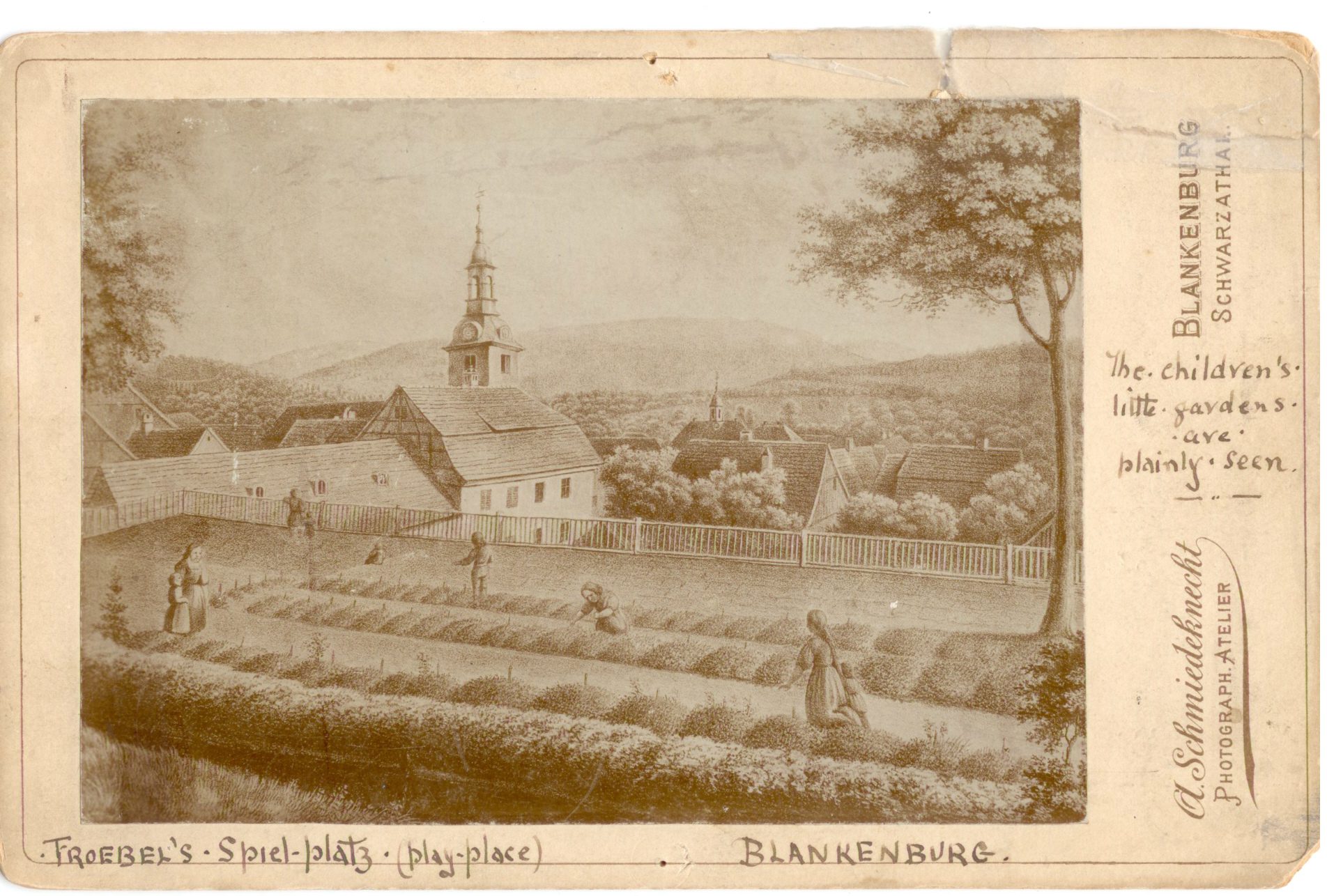Kaitlyn Kallimanis asks what educators and policy-makers in the United States might do to bring the kindergarten back to its Froebelian roots.
Kindergarten: everybody in the United States knows the term but few know where it originates. “Kindergarten” refers to the first year of American elementary school, more or less equivalent to “reception” in the United Kingdom. Often, the children must meet various benchmarks in literacy, mathematics and phonics to “graduate” on to the next year of primary school. This approach differs vastly from Froebel's philosophy of early learning.
Americans familiar with the German language may recognise that term, coined by Friedrich Froebel in the 19th century, translates to “garden of children” but few are familiar with the philosophy behind it.
In fact, many Americans would be surprised to learn that Froebel’s kindergarten was built around an actual garden, both literally and metaphorically, and based on a spiritual, naturalistic, and child-centred philosophy.

The German kindergarten was a place where children ages 2-7 were nurtured and tended to so that they would be free to grow at their own pace like flowers in a garden. They were “taught” by following their inborn curiosity about the world around them. They learned by engaging in play, outdoor play especially, supported by nurturing educators.
The Froebel Trust lists eight primary interconnecting principles that define Froebelian pedagogy:
- Unity and connectedness
- Creativity and the power of symbols
- The central importance of play
- Engaging with nature
- Autonomous learners
- Knowledgeable, nurturing educators
- The value of childhood in its own right
- Relationships matter
While some of these principles can still be glimpsed today, the modern American kindergarten class is a universe apart from the free-flow play kindergarten that Froebel envisioned and which many of his followers espoused across the world.
...high-stakes testing has placed a particularly inappropriate degree of stress upon young children...
The introduction of high-stakes testing has placed a particularly inappropriate degree of stress upon young children – and teachers. US policies such as No Child Left Behind and the Common Core Standards Initiative have restricted the autonomy of both children and teachers alike. In contrast to viewing children as autonomous learners, lessons in mathematics, language arts, social studies and science are all instructed by a teacher while the children sit quietly. However, many teachers would like to include more time for play and outdoor learning, but due to the many benchmarks teachers are required to have their children meet, it is almost impossible to make time for it!
The kindergarten was brought to the United States by committed Froebelians in the 19th century. It is Susan Blow who is usually credited with bringing the kindergarten into the mainstream, having founded the first public kindergarten in St. Louis, Missouri. Due to a changing economy and a greater demand for childcare outside the home, Blow wanted to ensure that the kindergarten was accessible to all families while remaining true to Froebelian principles.
Around the 1920s, however, progressive Froebelians such as Patty Smith Hill and John Dewey criticised the perceived individualism of the traditional kindergarten movement in favour of a social learning model rooted in behaviouralist ideas about morality and control. While their intentions may have been positive, unfortunately, the integration of the kindergarten into the public school system made it more vulnerable to government legislation at odds with many Froebelian principles, which over time caused the American kindergarten to transform into something virtually unrecognisable from the revolutionary movement that gave it its name.
In the process of becoming integrated into the mainstream, I believe that the kindergarten has strayed from its revolutionary child-centred origins.
Due to the separation of church and state, for example, the spiritual element of traditional Froebelian pedagogy is absent. Some kindergartens do have an extra recess in addition to the 15-30 minute recess experienced by all elementary school children, as well as a short block of indoor play called “choice time.” But it is definitely a far cry from the original German kindergarten, where children were able to play outside for most of the day, and play with Froebel’s Gifts (toys that Froebel designed with the intention of teaching children about numbers, shapes, colours, and moral principles among other subjects). Can we really call it a kindergarten when its original Froebelian principles are largely – although not wholly – absent? Or are there ways of keeping that Froebelian spirit alive while remaining within the parameters of educational policy?
Is it possible to integrate more play-based and nature-based learning into the contemporary academic kindergarten curriculum?
In other words, what can educators and policy-makers do to bring the kindergarten back to its Froebelian roots?
About the author
Kaitlyn Kallimanis is a graduate of the University of Roehampton where she received her MA in Early Childhood Studies. She has worked with young children in both the US and UK. Kaitlyn created this short article during the Froebel Trust's Writing Workshop held in Summer 2022.
Pamphlets and guides
Take a look at our range of free resources for educators interested in a exploring themes and activities closely associated with Froebelian practice today.
Learn more

